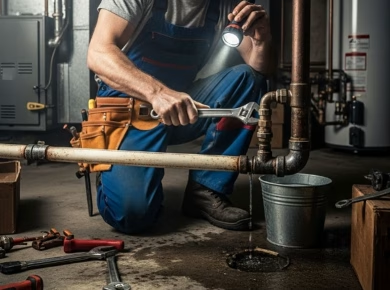Walking through a construction site, the hum of machinery and the sight of workers in hard hats is a familiar scene. Yet, beneath the surface of this bustling activity lies a critical aspect of safety that often gets overlooked: trench safety. The use of trench boxes, specifically from companies like United Rentals, sparks a debate among professionals: are they overpriced or overengineered? Having managed multiple projects where trench safety was paramount, I’ve witnessed firsthand the importance of these tools and the nuances that come with their use.
Understanding Trench Safety
To grasp the relevance of trench boxes, one must first understand the risks associated with trenching operations. According to the Occupational Safety and Health Administration (OSHA), trench collapses can occur within seconds, and the consequences can be fatal. The statistics are alarming; in the past decade, trench-related accidents have resulted in numerous injuries and fatalities, emphasizing the need for effective protective measures.
Trench boxes are designed to prevent cave-ins, providing a secure environment for workers. These structures, often made of steel or aluminum, are engineered to withstand the immense pressure exerted by the surrounding soil. However, the question remains: do they offer the best value for the investment?
Evaluating Cost vs. Value
When assessing whether United Rentals’ trench boxes are overpriced, it’s crucial to consider the broader implications of cost versus value. On the surface, the rental rates may seem steep, especially for small contractors operating on tight budgets. However, it’s essential to recognize what these boxes bring to the table.
Safety First
The primary function of a trench box is safety, and in construction, the importance of safety cannot be overstated. Investing in quality equipment reduces the risk of accidents and, ultimately, can save money in the long run by avoiding potential lawsuits and lost labor.
Long-Term Investment
Consider the long-term implications of using a trench box. While the upfront cost may be higher than alternative methods, the durability and reliability of these boxes can lead to fewer accidents and reduced downtime. A project manager I worked with on a large municipal project once noted how the initial investment in trench boxes allowed for quicker project completion, significantly boosting their bottom line.
Overengineering or Smart Design?
Critics often label trench boxes as overengineered, questioning whether the additional features justify the cost. However, delving deeper reveals that many design elements address specific risks inherent to trench work.
Designed for Varied Conditions
For instance, the ability of these boxes to adapt to different soil types and trench depths means they can perform effectively in diverse conditions. A box designed for sandy soil will differ from one intended for clay, and this adaptability is crucial for maintaining safety standards.
Enhanced Features
Moreover, some trench boxes come equipped with additional features, such as hydraulic systems for easier setup or integrated safety alarms that alert workers about potential hazards. While these features may seem excessive, they contribute to a safer work environment, justifying the investment.
Real-World Applications and Challenges
Using trench boxes in real-world scenarios often highlights both their advantages and challenges. On one project, we encountered unexpected groundwater, which created a significant risk of collapse. The trench box we employed not only provided immediate protection but also had built-in drainage features that mitigated the risk of water accumulation.
However, the installation process can be cumbersome, particularly in tight spaces. The weight and size of these units require careful planning and often additional equipment, which can complicate logistics. Understanding this trade-off is essential for effective site management.
Best Practices for Using Trench Boxes
To maximize the benefits of trench boxes, adhering to best practices is critical. Below are some strategies that have proven effective:
Proper Training
Ensure that all personnel involved in trench operations are adequately trained in the use of trench boxes. This includes understanding how to select the right box for the specific site conditions and how to install it correctly.
Regular Inspections
Conduct regular inspections of the trench boxes and surrounding areas. Checking for signs of wear and ensuring that the boxes are functioning as intended can prevent accidents before they occur.
Site-Specific Planning
Before beginning any trenching work, develop a site-specific safety plan that incorporates the use of trench boxes. This plan should consider soil types, water presence, and potential hazards unique to the site.
Conclusion: Prioritizing Safety and Value
As the construction industry continues to evolve, the importance of trench safety remains constant. While the cost of United Rentals’ trench boxes may raise eyebrows, their value in protecting lives and ensuring project efficiency is undeniable. By recognizing the balance between cost and safety, professionals can make informed decisions that prioritize not just compliance, but the well-being of their teams. Investing in quality trench protection is not merely a financial decision; it’s a commitment to fostering a culture of safety that resonates throughout the industry. As we move forward, let’s embrace these tools as essential components in our ongoing mission to create safer work environments.



